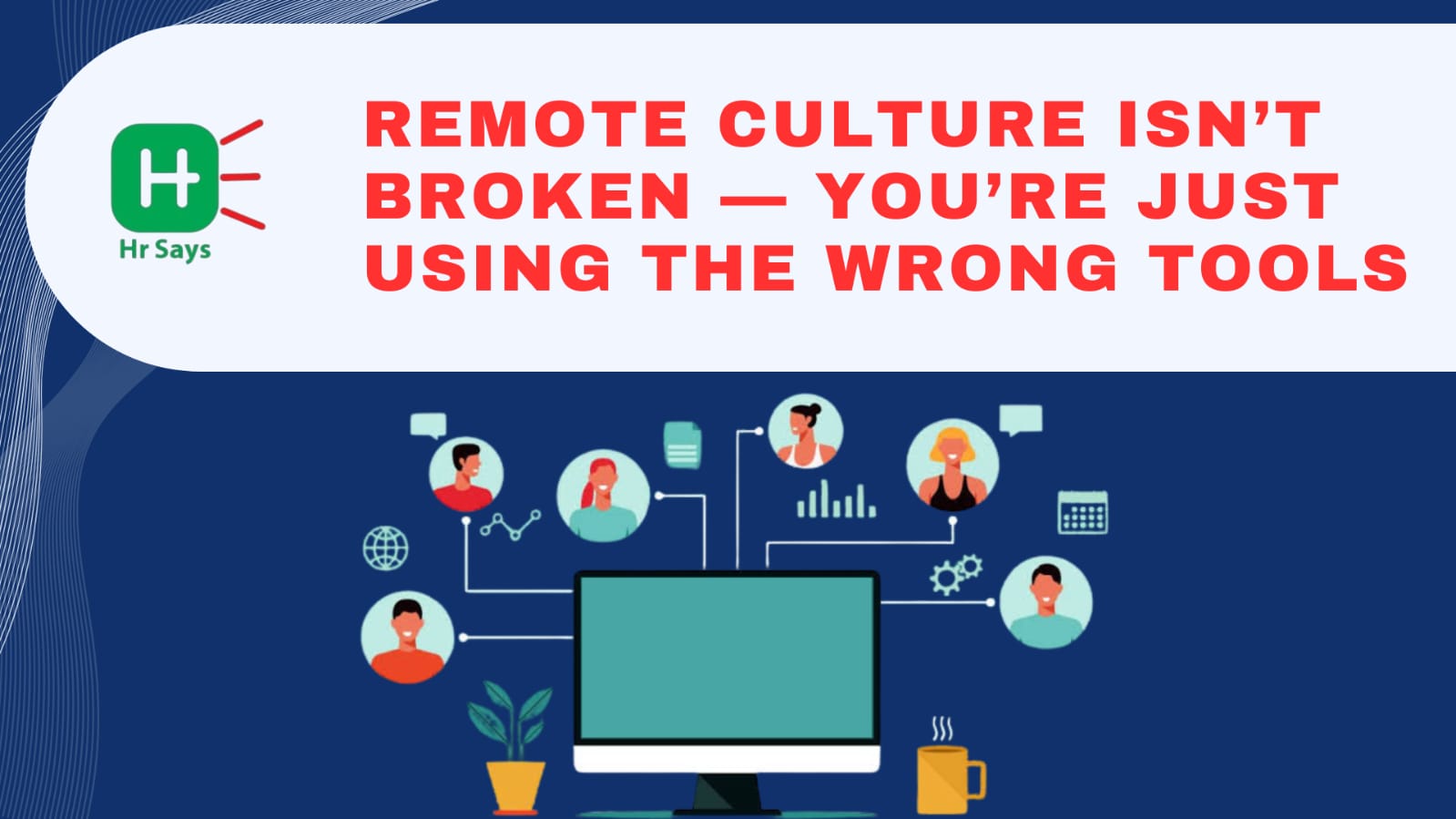Let’s get real: the problem isn’t remote work.
The problem is how some companies are trying to copy office culture online — and failing.
In 2025, the strongest workplace cultures aren’t built in breakrooms — they’re built in Slack threads, async rituals, and leadership transparency. The myth that “remote weakens culture” is being replaced by a more useful truth:
Culture is a system of shared meaning. Not shared space.
This article breaks down why remote culture fails when it's done wrong — and how progressive HR teams are building connection that actually works.
💬 Myth: You Need an Office to Build Culture
Truth: You need clarity, rhythm, and trust — not geography.
Companies that still equate culture with offices are confusing presence with engagement. But data tells a different story.
According to Buffer’s 2024 State of Remote Work report:
- 76% of remote workers feel more connected in async-first cultures
- Teams with flexible, trust-based systems show higher eNPS than office-centric peers
- Culture thrives where autonomy, feedback, and shared goals exist — not where desks do
🧩 Why Remote Cultures Feel “Disconnected” — and How to Fix It
Let’s break it down.
1. You’re Replicating, Not RethinkingRemote isn’t a Zoom version of your office. It’s a new context.
Weekly video meetings, digital birthday parties, and Slack micromanagement don’t build connection — they drain energy.
📌 Fix: Design for async-first, outcome-driven work.
Examples:
- Create “Week in Review” Looms from team leads
- Replace status calls with Notion boards and emoji-based progress updates
- Use check-in rituals like “Green-Yellow-Red” moods to build empathy without forcing calls
Your tech stack isn’t your culture.
It’s what you do with it that matters.
📌 Fix: Build low-cost, high-impact rituals that stick.
- Monday “Intentions” thread: What’s your focus this week?
- Friday “Fails & Wins” post: What did we learn?
- Monthly “Unmute Circles” — optional open calls with no agenda, just people
These simple practices create belonging — no emoji overload needed.
3. Your Leaders Aren’t Visible EnoughIn the office, leadership visibility was informal. In remote settings, it has to be intentional.
📌 Fix: Ask leaders to show up through:
- Short weekly memos (voice notes or video are great)
- One personal update + one team win = authentic and scalable
- Responding in open channels to employee questions
Remote teams don’t want polish — they want presence with purpose.
📊 Metrics That Actually Measure Remote Culture
|
Metric |
Why It Matters |
|
Participation in async rituals |
Indicates psychological safety and team cohesion |
|
Internal feedback scores |
Are employees comfortable sharing concerns? |
|
Response latency (in hrs) |
Reflects team norms around availability and autonomy |
|
Repeat project collaboration |
Signals trust and cross-team bonding |
You don’t need office tours to prove culture — these numbers tell the real story.
✨ Final Thought: Don’t Translate Culture — Reimagine It
Remote work isn’t a threat to culture.
It’s an invitation to design it better.
The future of HR isn't about pushing people back into offices — it’s about pulling them into purpose, no matter where they work from.
Coming soon on HRsays: Diversity or Just Optics? Real Stories from Inclusive Workplaces
📢 Have you led a successful remote-first initiative or ritual? We’d love to feature it on HRsays. Share your story and help redefine what culture means in the modern workplace.

 Building culture isn’t confined to office walls — and remote HRs are proving it. This article dives into how distributed teams stay emotionally connected, aligned, and engaged without physical proximity. We unpack rituals like async check-ins, onboarding buddies, and digital recognition systems that actually work. With remote work here to stay, HRs need new tools for belonging. This guide offers the structure and flexibility to make that possible.
Building culture isn’t confined to office walls — and remote HRs are proving it. This article dives into how distributed teams stay emotionally connected, aligned, and engaged without physical proximity. We unpack rituals like async check-ins, onboarding buddies, and digital recognition systems that actually work. With remote work here to stay, HRs need new tools for belonging. This guide offers the structure and flexibility to make that possible.













.jpeg)
.jpeg)

.jpeg)

.jpeg)


.jpeg)

.jpeg)

.jpeg)


